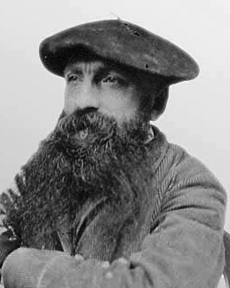Auguste Rodin, 1840-1917
Rodin, The Burghers of Calais
Heroic Self-Sacrifice in the Face of Defeat at the Hands of an Enemy
In 1884, the officials of city of Calais commissioned Rodin to create a monumental sculptural group commemorating the heroism of the citizens of Calais as they tried to resist the English takeover of their city during the Hundred Years War.
The historian Jean Froissart (1337-1405) told the tale of the resistance and eventual surrender of the city to the besieging forces of Edward III. The English king, angered by the long siege, insisted that the citizens of Calais must surrender the keys to their city, and that the six leading councilmen should appear before him with ropes around their necks so that they might be hanged immediately.
The citizens were eventually spared, reportedly at the intervention of the English queen. But Rodin’s sculpture depicts the moment before the six officials, unaware of their eventual reprieve, must go before the English king to await their executions. None of the six men looks at his fellow sufferers. Each expresses his own reaction — stoical acceptance, anger, despair — to his personal fate, compounded by the knowledge of the failure of their city’s resistance and eventual domination by the foreign enemy.
Stefan Zweig visits Rodin in his Paris studio before World War I:
(Click the text for a larger view)







